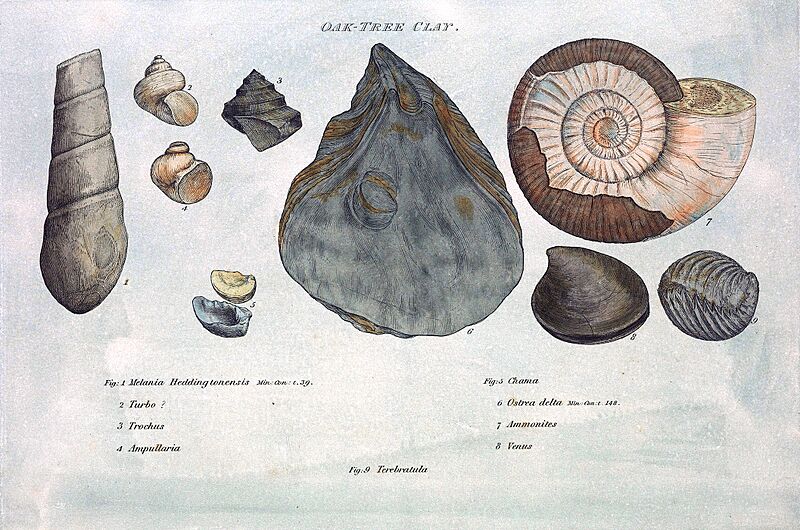Archivo: Smith fossils3

Descripción: Historical plate showing fossils that characterize the “Oak-Tree Clay” (corresponding to the Kimmeridge Clay of modern nomenclature, Kimmeridgian, middle Upper Jurassic) of England. This plate comes from the fundamental biostratigraphical work of the pioneer of modern Geology William Smith. Note that the names of the fossil taxa may have changed since, mainly in a way, that the historical genus concepts subsequently changed over to family or even higher-ranked taxa. For example, the genus “Ammonites” is not even used anymore.[1] The specimen shown in figure 7 has later been referred to the species Pictonia baylei of the family Aulacostephanidae. The genus Ostrea is still in use but its historical concept today corresponds to the family Ostreidae, and many historical species have been assigned to newly erected genera. The oyster shell shown in figure 6 today is referred to as Liostrea delta or Deltoideum delta. The „Terebratula“ in figure 9 is probably the rhynchonellid brachiopod which today is referred to as Torquirhynchia inconstans (originally formally named „Terebratula inconstans“ by Sowerby, 1821).
Título: Smith fossils3
Créditos: Plate 1 in: Strata identified by organized fossils, containing prints on colored paper of the most characteristic specimens in each stratum. Part 3 (1817). W. Arding, London, doi:10.5962/bhl.title.106808.
Autor(a): William Smith (1769–1839)
Términos de Uso: Dominio Público
Licencia: Dominio Público
¿Se exige la atribución?: No
Usos del archivo
La siguiente página enlaza a este archivo:

